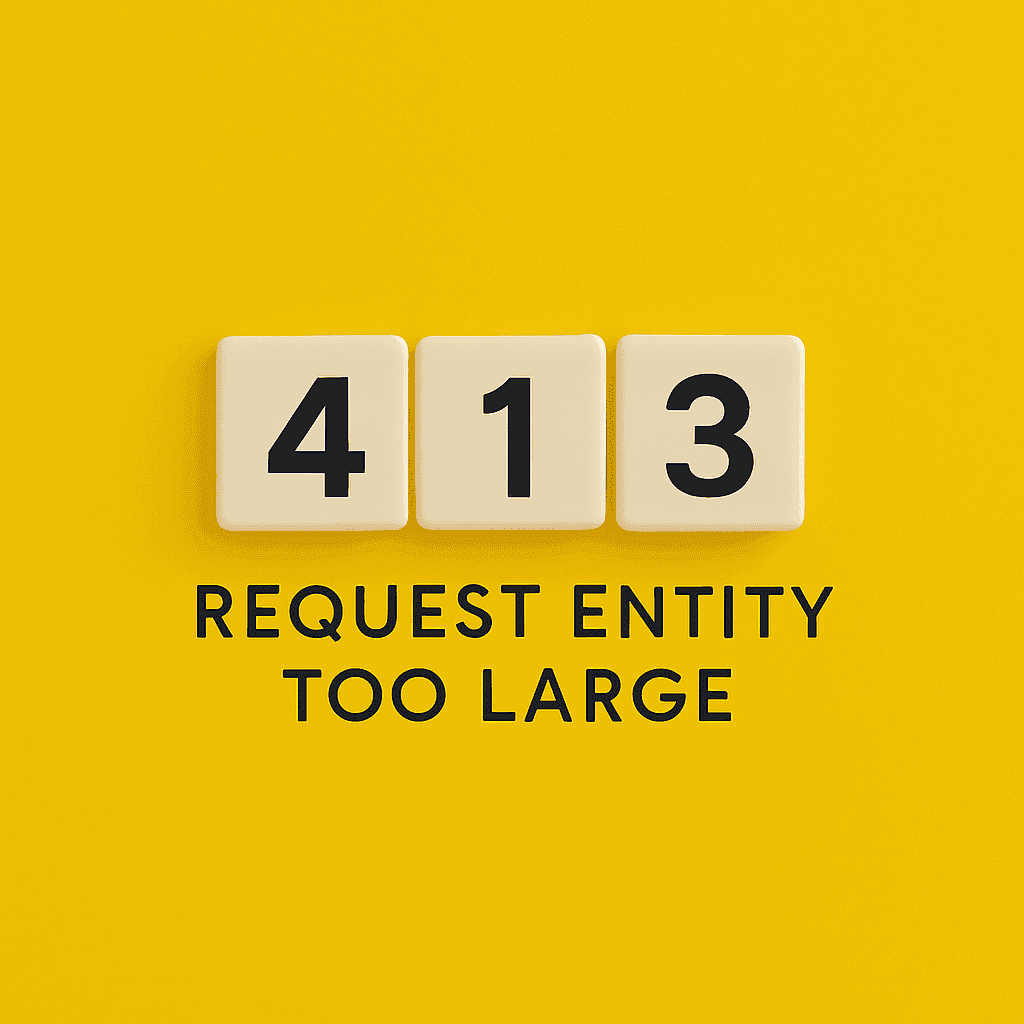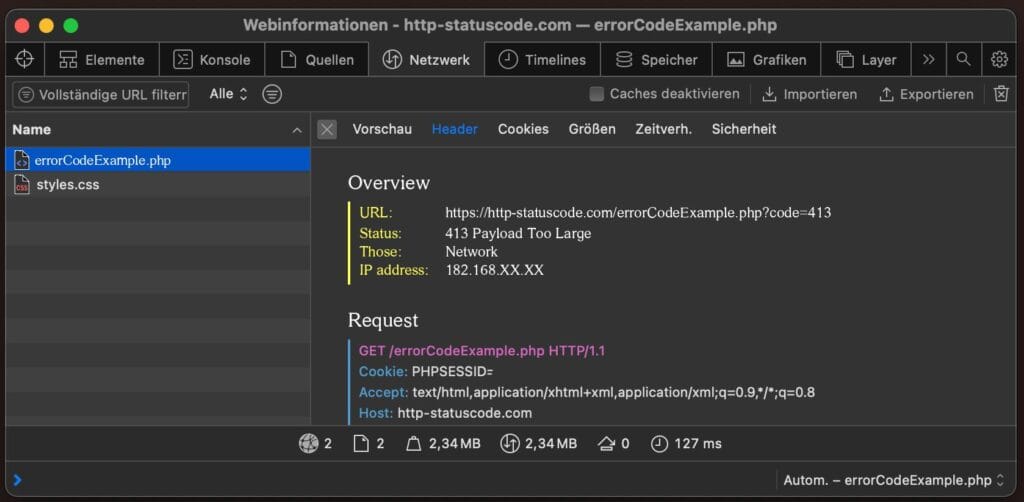
You send data to a server, such as a form with a file, an API call or a large JSON payload, and immediately get back an error message: 413 Request Entity Too Large.
Status code 413 is a server's way of saying: what you send me is bigger than I want to accept. Not because it's broken. Not because it is improperly constructed. Purely because of its size.
What exactly happens at a 413?
A 413 error occurs when the server receives your request, reads the headers and then decides: this body (the body) is too large. The request is not processed further. No parse, no storage, no processing. Just cut off immediately.
Sometimes this is caused by a file you upload. Sometimes by an oversized JSON array. And sometimes by something unexpected: a user filling a rich text field with huge embedded content, for example.
The response usually looks like this:
HTTP/1.1 413 Request Entity Too Large
In practice, this means either reducing your payload or adjusting your server.
What determines what is "too big"?
It depends on the software stack.
- At Nginx is the limit set via client_max_body_size
- Apache uses LimitRequestBody
- At PHP is in post_max_size and upload_max_filesize
- Express.js and other Node frameworks have their own middleware limits
Sometimes there is also a reverse proxy in between, such as Varnish or an API Gateway, which has its own limits. These can intervene even earlier.
Where do you see this error type reflected?
Especially in applications that do file processing. Consider:
- Upload forms with images or videos,
- APIs that accept bulk data,
- Or frontends that pass large inputs without validation.
A typical situation: a user tries to upload a 50MB video to an endpoint that allows a maximum of 10MB. Result: 413 request entity too large.
How do you solve it?

It depends on where you have control.
If you are a client:
- Reduce your payload. Consider compressing images or splitting data.
- Limit the amount of records in a single API call.
- Add validation before submission to block oversized content.
If you manage server:
- If necessary, increase the limit (deliberately and in a controlled manner).
- In Nginx, for example:
client_max_body_size 20M; - In PHP:
post_max_size = 20M
upload_max_filesize = 20M
But do think about why you are adjusting the limit. Larger uploads require additional server capacity, logging, validation and security.
In conclusion
The 413 status code is not complex, but it is important. It is a warning that your system is trying to process what it cannot handle, or does not want to process based on set limits.
Don't think of it as a crash, but as a boundary you need to consciously manage. With optimized WordPress Hosting, scalable Cloud Hosting or specialized WooCommerce Hosting make sure uploads and API traffic fit the way your application is intended to function.
Because bigger is not necessarily better. And a 413 rarely comes out of nowhere.